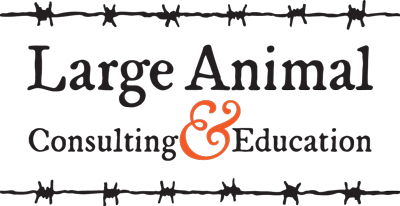Fall on most beef operations means pregnancy checking cows and weaning calves. Because winter is coming, this is a very strategic time of year to critically evaluate all cows for suitability to keep through the winter. Keeping cows with problems costs you money every single day and there is more to consider than just “pregnant” or “open” as they go through the chute. A thorough evaluation beyond the pregnancy check should take place for each cow.
Feet
The best time to look at feet may be as cattle are being driven up to the pens. Once they are in the alleyway or chute, it can be hard to look at the feet effectively. Lameness at a walk is, of course, a cause for further examination, but a closer look at the feet of sound cows should also occur. Conditions such as corkscrew claw (see Figure 1) and overgrown toes can cripple a cow over time. Both may be improved with trimming, but trimming cows with corkscrew claw is only generally a short-term fix. If this condition is noticed at pregnancy check, she can be trimmed up and raise the calf, but she should be culled before the condition reoccurs the following year. I also do not recommend keeping replacement heifers and bulls from cows (or bulls) affected with corkscrew claw.
- Figure 1
Eyes
Cancer eye is a condition which primarily affects white-faced cattle, but can happen in any breed. When I pregnancy check cows for my clients, I make a point as I wait chuteside for the next animal to watch her eyes as she comes in. Depending on the location of the cancer, it can progress rapidly so even small lesions should not be ignored. The most common locations for cancers to pop up are the inner corner of the eye, the lower eyelid margin, and the outer portion of the eyeball itself. Those in the inner corner and lower lid are the ones mostly likely to be aggressive locally and spread to the lymph nodes and other structures. Spotted early, these can be surgically debulked to buy time to let a pregnant cow to calve out and raise the calf.
Udder
We have all seen that cow with teats that are abnormally shaped or abnormally large (see Figure 2), enough to prevent a calf from nursing well. Sometimes this occurs in one quarter leaving 3 functional but even that still limits the growth potential of the calf. In cows with more affected quarters, the reduction in calf growth and vigor can be significant. If the calf is not adequately able to nurse the first milk or colostrum at birth, he will be predisposed to serious infections in calfhood and, as research has shown, failure to take in adequate colostrum can affect performance throughout calfhood and into the feedlot.
- Figure 2
Body Condition Score
Beef cows should calve at a body condition score of 5-6/9. Overfat cows and overthin cows are both at risk of having problems around the time of calving if their conditions are not improved. Overfat cows may have trouble calving due to fat deposition in the pelvis and poor milking due to fat in the udder. Thin cows may have trouble calving due to weakness, won’t milk well due to energy deficiency, and will not breed back as quickly as an appropriately-conditioned cow. Being fat or thin isn’t necessarily a reason to cull at pregnancy check in the absence of other problems, but it is a clue that maybe that cow and others like her should be housed and fed separately to better prepare them for calving.
Teeth
Particularly for thin cows and cows for which no age records have been kept, examining the teeth is important. A cow with worn or missing incisors (see Figure 3) is less able to grasp and use forage and will deteriorate through the winter in late pregnancy. If these cows are pregnant and kept, they should be separated for feeding of high-quality, highly digestible feeds to get them through.
- Figure 3
Temperament
I strongly encourage my clients to make notes in their records when cows are particularly anxious or aggressive when being worked through facilities. A couple of weeks ago, I was working cattle for a client and one cow became highly agitated back in the holding pen and injured herself before she ever made it into the alleyway to come to the chute. In discussing her attitude with the client, he indicated that this cow, “has been like this her whole life.” These kind of cows are just not worth it. At some point, they are going to injure someone or they are going to injure themselves critically such that all their value is lost. Identify these cows early in their life – preferably as heifers – and get them out of the herd. No cow is worth getting a person injured over.
For many of these things, the condition will still allow a pregnant cow to carry the calf and then raise it, providing a much better return on investment than culling the cow at pregnancy check time. What happens all too often, however, is that folks forget to sell the cow the next year and hang onto her too long, resulting in more grazing costs and reduced salvage value as the disease has progressed. It is critically important that records be carried over so that cows pegged for future culling are properly identified at calf weaning.




